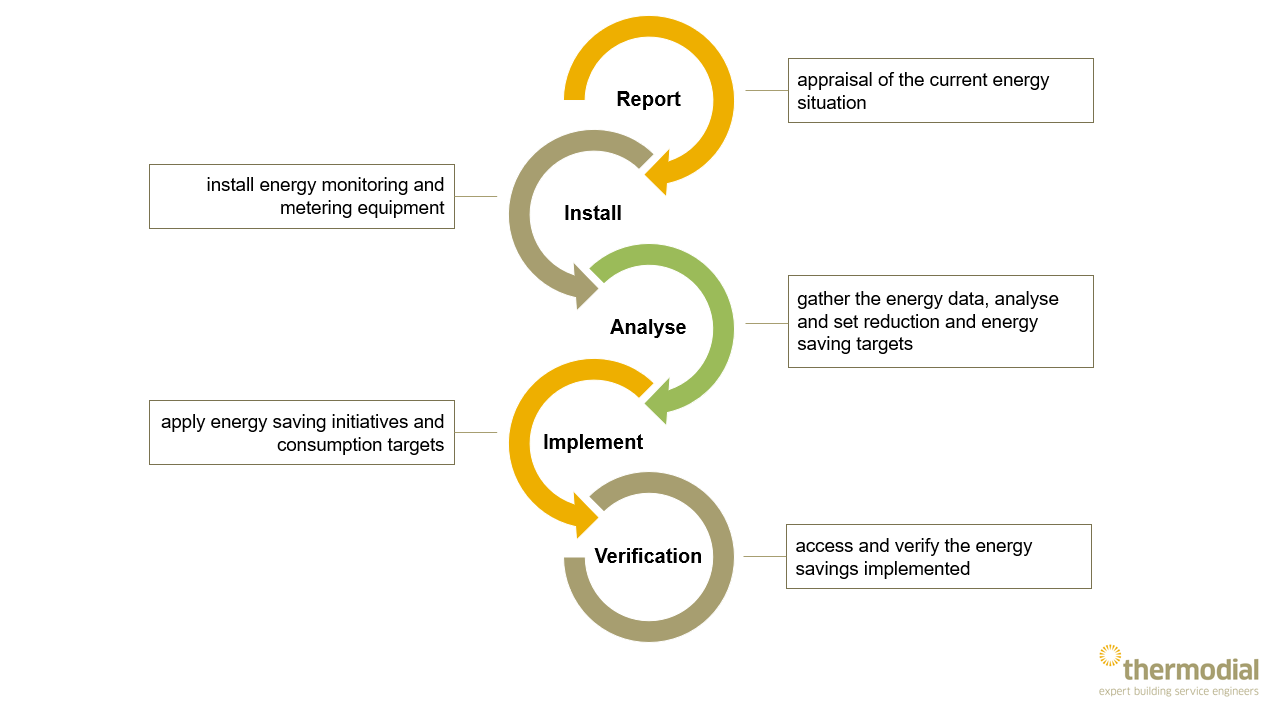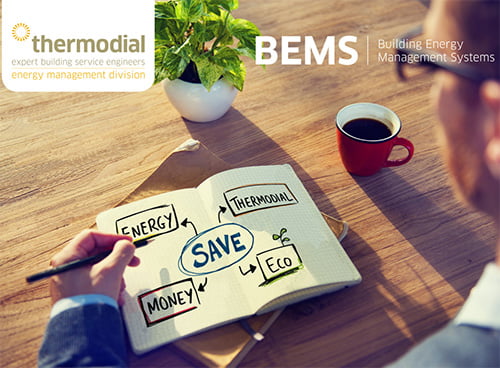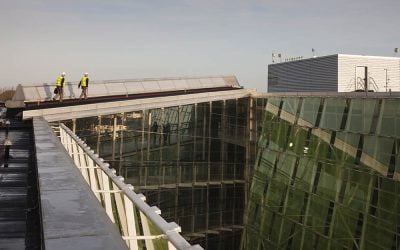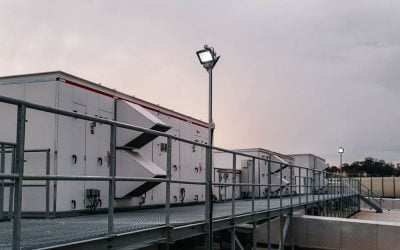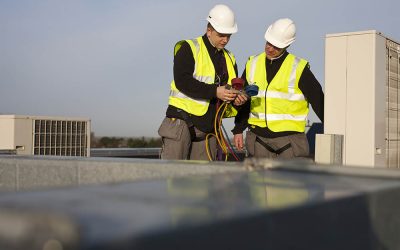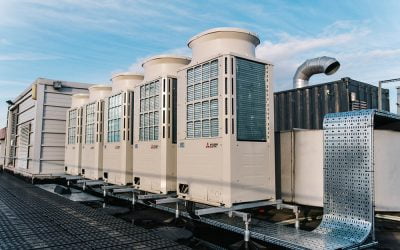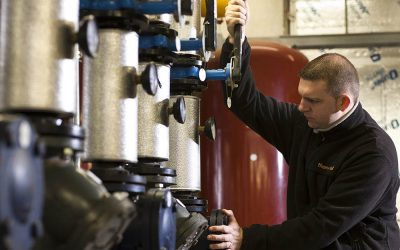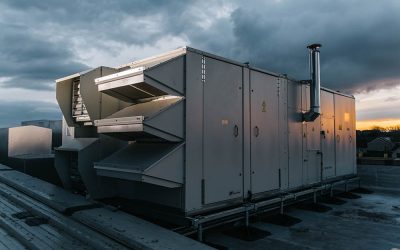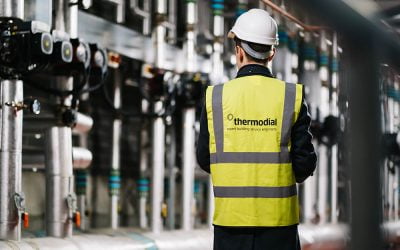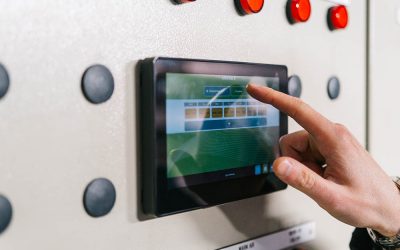Building energy management

Energy management of heating, ventilation and air conditioning (HVAC) and water services in a building are crucial in cost and budget management for facility managers and building owners.
Energy conservation and environmental considerations are also important drivers in energy management, in an increasingly conscientious and aware society.
Energy management and efficiencies gained will help to lower buildings and their enclosed services’ energy consumption and environmental impact. It is incumbent on business to assist in the global effort, to actively address climate change action and assist national governments in meeting their targets.
Figures show that buildings are responsible for around 50% of energy use – according to Chartered Institution of Building Services Engineers (CIBSE), whose maintenance and engineering management guide is the authority on building services. While the Carbon Trust contend that buildings produce around 37% of carbon emissions.
Further, those businesses with ISO standards, such as 50001 for energy management systems and 14001 for environmental management systems are required to show auditors, they are proactive in the areas of energy and emissions.
Requirement for energy audits
Non-small and medium-sized enterprises (SMEs) are required to carry out energy audits. Article 14 of Statutory Instrument (S.I.) No. 426 of 2014 of European Union (Energy Efficiency) Regulations 2014 dictates that companies in Ireland with more than 250 employees or whose annual turnover exceeds € 50 million, must have an independent energy audit carried out at least every four years. While public bodies with a floor area of more than 500 m2 or who spend more than € 35,000 on energy per annum must do the same. SMEs are exempt under regulations.
Companies that are not SMEs shall carry out an energy audit… audits shall take place within 4 years of the previous energy audit.
energy audit requirements and exemptions
How are energy savings achieved?
Energy savings are achieved by the design and implementation of an energy management plan – agreed amongst key energy stakeholders, such as, building owners, facility managers, department heads and all impacted staff.
Energy management plan
There is a five-step process in an energy management plan. It is a continuous circular process, evolving to refresh itself to further energy conservation targets having completed the initial five-step process.
- Report – appraisal of the current energy situation.
- Install – install energy monitoring and metering equipment.
- Analyse – gather the energy data, analyse and set reduction and energy saving targets.
- Implement – apply energy saving initiatives and consumption targets.
- Verification – access and verify the energy savings implemented.
HVAC, water and lighting systems consumption
Heating, ventilation, air conditioning (HVAC), hot water and lighting systems are responsible for 80% of a non-domestic buildings’ energy consumption. Therefore, the successful installation, commissioning and control of these systems are essential in energy management plans – working alongside planned preventative maintenance (PPM) in ensuring the correct operation of these systems.
Control consumption
Meanwhile, the Sustainable Energy Authority of Ireland (SEAI), in their commercial buildings survey found that:
room-by-room time and temperature controls were much less common, being present respectively in only 9% and 15% of surveyed buildings.
Controlling room temperatures, water and lighting are critical in driving down energy use in a building, as this equipment consumes over three quarters of a buildings’ energy use.
Before 31 December 2025 there is a requirement for building automation and control systems (BACs) in commercial buildings, according to article 5 of Statutory Instrument (S.I.) No. 393 of 2021 of European Union (Energy Efficiency) Regulations 2021:
A new building shall, where technically and economically feasible, be equipped with self-regulating devices for the separate regulation of the temperature in each room or, where justified, in a designated heated zone of the building unit…
An existing building (other than a dwelling) shall… be equipped with a building automation and control system if:
(i) the effective rated output for heating systems or systems for combined space heating and ventilation in the building is over 290 kW, or
(ii) the effective rated output for systems for air-conditioning or systems for combined air-conditioning and ventilation in the building is over 290 kW.
energy performance of buildings
Remote access and monitoring
All stages of the five-step the energy management plan can be performed with the assistance of remote monitoring of HVAC, water and lighting systems. Remote monitoring can enable the full view of these systems, without being physically present on-site.
Remote monitoring is performed through a remote access router over a secure cellular connection to the internet, meaning access to systems aren’t bound by traditional physical access procedures and opening times.
Technologies such as the eWON – when installed to a building energy management system (BEMS) or BMS – can allow direct remote access to on-site systems via a cellular internet connection.
Remote access and monitoring benefits
The benefits to remote access and monitoring in energy management include:
- A potential energy saving of 8% to 14%.
- Energy control – full visibility of systems and the ability to control devices in accordance with energy conservation and building occupancy.
- Early diagnosis of issues – quickened response to emergency issues by simply accessing systems on the remote monitoring PC with no physical barriers to entry.
- Reduced travel time and costs – saving on service engineers’ time, fuel and tolls costs, in the likely event that issues can be resolved through the remote monitoring PC.
- Environmental costs – saving on carbon emissions from efficiencies gained through the energy management plan and thus their more efficient operation.
Environmental savings are also maximised from the service engineer not travelling to site. - Security – a private IP address is used in remote monitoring, causing no interference with local firewall security.
Thermodial’s approach
Talk to Thermodial about in-house energy management services, providing energy expertise, fully costed options, reporting requirements, remote monitoring from Thermodial’s energy monitoring bureau and an annual review of energy initiatives. Thermodial can also walk you through and assist you in the energy management process, from our energy management experience and certification to ISO 50001 – 2018 standard – for energy management systems.
Key guidance source materials
Chartered Institution of Building Services Engineers (CIBSE) | Guide M: maintenance engineering and management.
European Union (Energy Efficiency) Regulations 2014 | S.I. No. 426 of 2014.
European Union (Energy Efficiency) Regulations 2021 | S.I. No. 393 of 2021.
Sustainable Energy Authority of Ireland (SEAI) | Extensive survey of the commercial building stock in the Republic of Ireland.
Heat recovery shows energy saving of 25%
Recovering energy saves over € 20,000 and pays back within 11 months. Large energy spend A Dublin City Centre leisure centre with a large monthly energy spend, saved € 21,505 on their annual energy bill by repairing the mechanical ventilation heat recovery...

HVAC energy saving tips from our engineers
HVAC energy savings tips from Thermodial service engineers, covering commercial heating, ventilation and air conditioning systems. With energy bills at unprecedented levels, energy savings tips for domestic properties are also included. 1. Monday HVAC energy saving...
From the news archives…
HVAC energy saving tips from our engineers
HVAC energy savings tips from Thermodial service engineers, covering commercial heating, ventilation and air conditioning systems. With energy bills at unprecedented levels, energy savings tips for domestic properties are also included. 1. Monday HVAC energy saving...
VIDEO: water system damage prevention – blank caps
A water leak or flood in the plant room or boiler house is probably something a facility manager worries about the most – particularly as most water damage is preventable with the correct control measures. Resulting system downtime, the clean-up, replacement of...
VIDEO: clocks move forward this weekend – avoid time clock issues
Clocks move forward by one hour this weekend - in the early hours of Sunday 27 March at 01:00 (Saturday night). Clocks switch from Greenwich Mean Time (GMT) to Irish Standard Time (IST). Avoid situations like the one in this video, where our service engineer was...
HVAC upgrade: heat recovery system saves tonnes of energy
A heating, ventilation and air conditioning (HVAC) upgrade to a heat recovery system not only produced annual savings of over € 13,000 on energy and 24 tonnes of carbon dioxide (CO2) for the environment; but it also resulted in reduced planned preventative maintenance...
Building energy management: remote access and monitoring saves on PPM
The installation of remote access and monitoring of a site-based building energy management system (BEMS) allowed for planned preventative maintenance (PPM) savings to be achieved through fewer physical callouts. Service engineers were then able to access the BEMS...
Talk To Thermodial
When Thermodial were founded in 1986, the founders had a vision of an engineering focused service, but also one that was responsive and reliable.
This belief should hold true to dealing with questions or information requests, such as one you may have.
Please contact us by filling in the form below, for a prompt response; email info@thermodial.ie or ring us in Dublin.
As the experts in HVAC maintenance, upgrades and energy management, we would be happy to respond to your requests.

